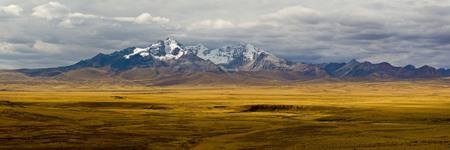Reconstruction and Projecting the Global Behaviour of Glaciers from 1850–2300

Glaciers form prominent features of the alpine landscape. They allow people to directly perceive slow changes of the climate system, that otherwise would be overwhelmed in human perception by short-term noise, i.e., weather and natural climate variability. Because of these properties, shrinking glaciers around the world have become poster children of anthropogenic climate change.
But impacts of glacier change – whether growing or shrinking – go far beyond this sentimental aspect: By changing the seasonality of runoff, glaciers are important regulators of water availability in many regions of the world. Retreating (as well as advancing) glaciers also lead to increased geohazards, e.g. from destabilized slopes and lakes dammed behind unstable, ice-cored moraines. Finally, even though the ice mass stored in glaciers seems negligible compared to the Greenland and Antarctic Ice Shields, glaciers have contributed significantly to sea level rise in the past, and probably have been the biggest single source of observed sea level rise since 1900. Improving the knowledge how glaciers have been and will be changing when subjected to climate change, both natural and anthropogenic, is therefore a pressing task.
But very few studies have tended to projections of future change of the world’s glaciers, and to our knowledge, no global study has been performed using a model that was validated independently against observed glacier changes of the 20th century.
The overarching goal of the project is to deepen the understanding of mountain glaciers' responses to climate change on global, regional, and potentially local scale. In order to achieve this goal, within the framework of the project we will develop a model system able to estimate an individual glacier's response to climate variability and change, and able to be applied to each of the world's glaciers in the past and future based on the available data. The model system will be applied for each of the world’s glaciers from the years 1850 to 2000 in hindcast mode to (i) provide a basis for validation, and (ii) to obtain detailed understanding of the past behavior of glaciers. Finally, we will employ the model system for future climate projections for the years 2000 to 2300 in order to obtain detailed understanding on how the glaciers will respond to future climate change.
The analysis of these reconstructions and projections will allow for detailed new insights into glacier-climate interactions, better constrained projections of future sea level rise, and better knowledge about the future behavior of systems depending on or being influenced by glaciers, such as hydrology and water resources management, renewable energy from hydro power, geomorphology, and alpine ecology.
Project
Project Leader:
Ben MARZEION
Members:
Marlis HOFER
Lindsey NICHOLSON
Co-PI:
Georg KASER
Funding Agencies:
FWF
Project Duration:
01/01/2013 to 31/12/2016
